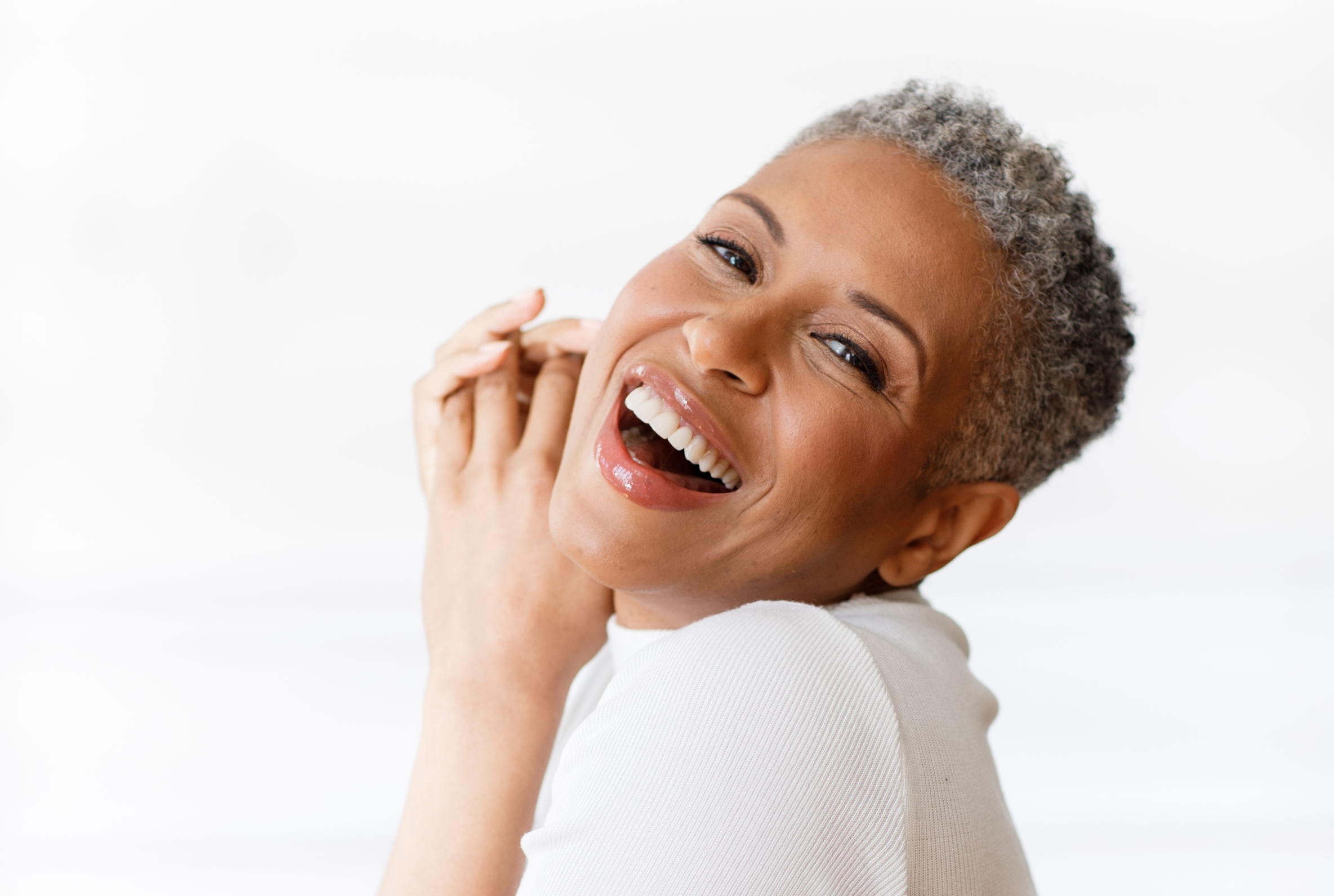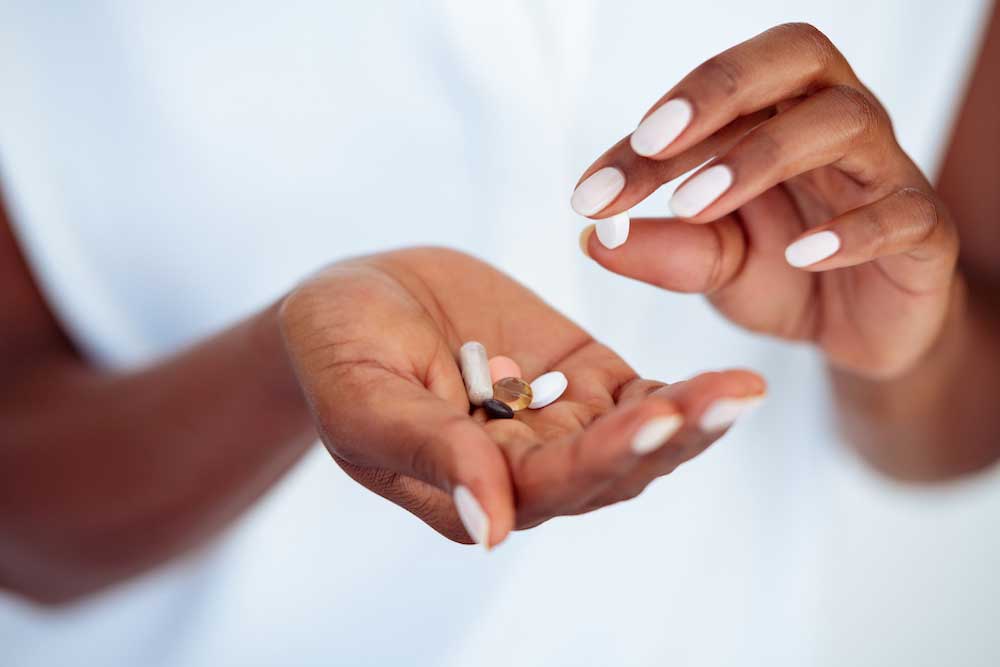I’ve heard several doctors recently describe skin as being a bit like the dashboard of a car, as it often flags up something happening on the inside. That certainly seems to be the case during menopause when a glass of red wine (or ANY alcohol for that matter) can suddenly cause a flushed, red face or a favourite face serum we’ve used for ages to result in an allergic reaction. Women are often confused about why this happens, do they have sensitive skin or do they need rosacea menopause treatment?
Dr Sophie Shotter, medical director and founder of Illuminate Skin Clinic in Kent, treats many women in their 40s, 50s and beyond. She explains why our skin can become extra sensitive in midlife and the difference between skin sensitivity and rosacea. The symptoms can be similar and are often mistaken for one another. Dr Shotter shares her symptom checklist and menopause rosacea treatment plan, while Dr Lucy Wilkinson adds some advice for menopausal women.
Find what you need quickly
- Why does menopause skin sensitivity happen?
- What is rosacea?
- How do I know if I’ve got rosacea or just sensitive skin?
- What is the link between rosacea and menopause?
- What do I do if it is rosacea?
- Do antibiotics treat rosacea?
- What about my menopause skincare routine?
- What other rosacea treatments can work?
- What can cause rosacea flare-ups?
- Does HRT help menopausal rosacea?
Why does menopause skin sensitivity happen?
As we approach midlife, your skin barrier integrity decreases and this means certain ingredients can penetrate the skin when they couldn’t previously. This might be why a favourite face cream you’ve used for ages can suddenly cause a reaction.
Skin sensitivity symptoms
The classic signs of skin sensitivity are things like redness, itchiness, a feeling of dry or tight skin.
You may find that the affected areas are those where you have applied a specific product if you begin to experience sensitivity with, for example, a particular cream or serum.
What is rosacea?
Rosacea is an inflammatory skin condition and it is very common. It is one of the most under-diagnosed menopause skin conditions, often dismissed as skin sensitivity as it shares similar symptoms.
This skin complaint mainly affects the cheeks, chin, nose and forehead, but it can also affect the eyes (ocular rosacea), which causes redness, burning, itching and swollen eyelids. Menopause and rosacea can make women feel very self-conscious.
Dr Lucy Wilkinson adds: “Rosacea is most commonly diagnosed in those with fairer skin tones, and typically begins between the ages of 30 and 50. The cause of rosacea is not yet fully understood, although it seems to happen for a combination of reasons. These include genetics, the immune system and environmental factors – including sun exposure, triggers and certain medications.”
Rosacea symptoms
- Flushing or redness, sometimes accompanied by painful or ‘stinging’ sensations
- Rash
- Spots
- Red vein marks
- Thickened skin, especially around the nose
How do I know if I’ve got rosacea or just sensitive skin?
If the flushing or redness flare-ups persist and are often accompanied by a rash or spots, then it could be rosacea. With rosacea, you may also see tiny broken blood vessels in the affected areas.
Also more common in rosacea are certain triggers which are not typically a problem for those with sensitive skin alone. These can vary between individuals, but often trigger uncomfortable facial flushing and can include alcohol, spicy food, hot drinks, caffeine and physical exercise.
It can be very difficult to tell the difference between sensitivity and rosacea. Talk to your doctor, dermatologist or skin clinic if you are unsure or if your symptoms persist.
Read more about prickly skin in menopause.
What is the link between rosacea and menopause?
Rosacea and menopause are frequently considered to be linked, and it is easy to see why.
In rosacea, we typically see changes in both the blood vessels supplying the skin (which causes the flushing and thread veins) as well as inflammation in the skin itself (which causes residual redness and irritation). Menopausal changes can play a part in both of these.
Hot flushes are common and sometimes troublesome during menopause, when they can contribute to changes to the delicate blood vessels in the face. This flushing – just like flushing from other environmental sources – is thought to be a trigger for menopause rosacea flares.
Likewise, hormonal changes common in menopause can affect the skin itself. Reduced oestrogen levels can bring with them lower levels of collagen, glycosaminoglycans and natural oils. These can lead to a disrupted skin barrier and skin which is more prone to irritation and inflammation as seen in rosacea during menopause.
Find out more about skin changes in menopause.
What do I do if it is rosacea?
Don’t just head to the shops and buy up every product for problem skin – save your money.”
Your first port of call should be to visit a professional for expert advice – see a dermatologist or your doctor. Unfortunately, so many people I see have spent a fortune on the wrong skin products with little or no results to show for it. It’s important to get a diagnosis and then follow with the correct medication and skincare.
Do antibiotics treat rosacea?
It depends on the severity and type of rosacea.
Some of the most common and effective first-line treatments include antibiotic creams and gels, although one of the most popular and effective choices at the moment is Soolantra (also known as ivermectin). This is a cream that works in a slightly different way to traditional antibiotics, but which has been shown to be very effective in treating rosacea.
Azelaic acid is a very commonly-prescribed antibiotic cream that can help with rosacea. Stronger versions of this product are prescription-only, although milder forms are available to buy over-the-counter. Many people even without rosacea use this product for its anti-inflammatory and exfoliant properties.
In some cases, your doctor may recommend antibiotic tablets. The most commonly used (and proven) is doxycycline.
What about my menopause skincare routine?
Less is definitely more when it comes to menopause and rosacea treatment or skin sensitivity. It’s important to use products that do not strip the skin and focus on skin barrier repair.
Rosacea skincare
A consistent skincare routine is vital to protect, restore and calm the skin to become healthier over time, especially if you’re dealing with rosacea during menopause. Add these to your routine:
- Gentle cleanser – ideally a creamy one. Avoid balms or oily cleansers if there are any pustules present
- SPF cream – a daily sunscreen with a minimum 30 SPF offers protection against UVA and UVB rays from the sun and is vital in preventing flare-ups
- Moisturiser at night
Skincare ingredients to avoid for rosacea
If you do search around for skincare products, make sure they don’t contain the following ingredients to avoid worsening the condition:
- Alcohol
- Witch hazel
- Menthol
- Camphor
- Fragrance
- Peppermint
- Eucalyptus
- Propylene glycol
- Sodium lauryl sulphate
- Salicylic acid
What other rosacea treatments can work?
Treatments sometimes recommended include:
- Soothing redness – LED Light therapy
- Removing red vein marks – IPL laser and V Beam laser treatments can help but it’s advisable to wait until the pustules have gone before beginning treatment. Usually, a series of treatments is necessary
- For flushing (not rosacea) – Tiny injections of Botox can help as it decreases the action of the vasomotor muscles, which cause flushing in the first place. If you’re not a fan of injections, the Botox can be ‘stamped’ into the skin via an Aqua Gold treatment using a small device containing hair-fine tiny needles
Your doctor will be able to guide you on the best choice for your needs.
What can cause rosacea flare-ups?
Common triggers for rosacea and flushing include red wine, spicy food, sunlight and stress. Obviously, some of these are easier to avoid than others!
Does HRT help menopausal rosacea?
Dr Lucy Wilkinson says: “We know that HRT is the most effective way to treat menopausal symptoms. However, that doesn’t necessarily mean that it is the best first-line choice for treating the rosacea that tends to flare in midlife.
“As HRT comes with certain side effects and risks, it is generally reserved only for symptoms where there is no other more effective treatment. Most commonly, this means vasomotor symptoms (including hot flushes, night sweats and palpitations), but can also include a variety of other issues. If your only concern is treating your rosacea, the options discussed above would be a good place to start.
“Having said that, if you do take HRT, you may notice a welcome improvement in flushing and redness. Your own doctor is the best person to advise you on treatments for your personal circumstances.”
Find out more about menopause on the blog or in the symptoms library.





